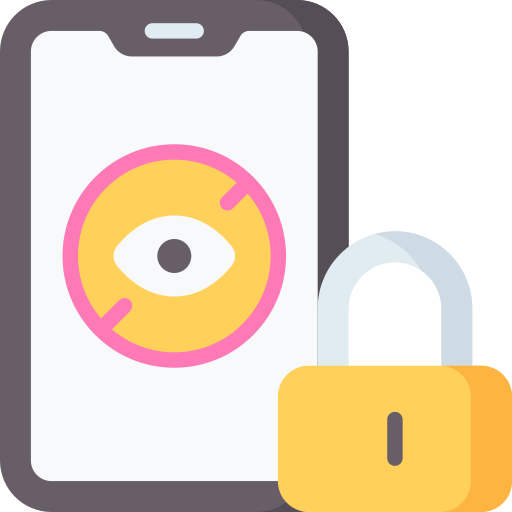Understanding the Importance of Online Safety for Children
Online safety for children is a crucial topic that cannot be overlooked in today’s digital age. With the increasing use of technology and the internet, it is essential for parents to understand the importance of protecting their children online. The internet provides numerous opportunities for learning and entertainment, but it also poses potential risks and threats that can harm young users.
One of the main concerns when it comes to online safety for children is exposure to inappropriate content. Children may accidentally come across explicit or violent material while browsing the internet, which can have a negative impact on their mental well-being. It is vital for parents to implement age restrictions and content filters on devices used by their children to ensure they are only accessing appropriate content.
Another significant risk associated with online activities is cyberbullying. Children may be subjected to harassment, intimidation, or even blackmail from peers or strangers through social media platforms or messaging apps. Parents should educate their children about safe practices such as not sharing personal information online and reporting any instances of bullying immediately.
In conclusion, understanding the importance of online safety for children is paramount in ensuring their well-being in this digital era. By setting up secure devices and networks, implementing age restrictions and content filters, monitoring their activities during shopping experiences, educating them about safe practices, recognizing scams/fraudulent websites, balancing privacy/supervision appropriately,and utilizing safe payment methods- we can protect our kids from potential dangers lurking on the internet
Potential Risks and Threats of E-Commerce for Kids
Children are particularly vulnerable when it comes to the potential risks and threats of e-commerce. One major concern is the exposure to inappropriate content. Online shopping platforms often display advertisements and product recommendations that may not be suitable for children. They can come across explicit images, videos, or descriptions that could have a negative impact on their development.
Another significant risk is the possibility of encountering online scams and fraudulent websites. Children may not have developed the critical thinking skills necessary to identify suspicious websites or offers. They might unknowingly provide personal information or make purchases from unreliable sources, putting themselves at risk of financial loss or identity theft.
Additionally, there is a growing concern about cyberbullying in relation to e-commerce activities. Children who engage in online shopping may become targets for cyberbullies who exploit their vulnerabilities through malicious comments, harassment, or even spreading false information about them. This can lead to emotional distress and damage their self-esteem.
It is crucial for parents and guardians to be aware of these potential risks and take proactive measures to protect children while they engage in e-commerce activities. By implementing age restrictions on platforms, using content filters to block inappropriate content, monitoring their online activities closely without invading privacy excessively, educating them about safe practices such as verifying website authenticity before making purchases – parents can create a safer environment for children’s online shopping experiences.
Setting Up Secure Devices and Networks for Safe Online Shopping
Setting up secure devices and networks is crucial for ensuring safe online shopping experiences for children. By taking the necessary steps to protect their devices and networks, parents can minimize the risks of cyber threats and unauthorized access.
Firstly, it is important to ensure that all devices used by children for online shopping are equipped with updated security software. This includes antivirus programs, firewalls, and anti-malware tools. Regularly updating these software helps in detecting and blocking any potential threats that may compromise the safety of personal information or lead to fraudulent activities.
In addition to securing individual devices, setting up a secure network is equally essential. Parents should enable encryption on their home Wi-Fi network by using a strong password that cannot be easily guessed or hacked. It is also advisable to change this password periodically. Furthermore, disabling remote management features on routers can prevent unauthorized access from outside sources.
By implementing these measures, parents can create a safer environment for their children’s online shopping activities. However, it is important to remember that no system is completely foolproof against cyber threats; therefore, ongoing vigilance and monitoring are necessary to ensure continued safety while browsing e-commerce platforms with kids.
Implementing Age Restrictions and Content Filters for E-Commerce Platforms
Age restrictions and content filters are crucial tools for ensuring the safety of children while they engage in online shopping. E-commerce platforms should implement strict age restrictions to prevent underage users from accessing inappropriate or potentially harmful content. By verifying the age of users before granting them access, platforms can create a safer environment for children to browse and make purchases.
Content filters play an equally important role in protecting children from encountering explicit or unsuitable material while shopping online. These filters work by blocking or flagging content that may be deemed inappropriate based on predefined criteria such as violence, adult themes, or explicit language. By implementing robust content filtering systems, e-commerce platforms can significantly reduce the risk of exposing children to harmful or disturbing material.
Furthermore, it is essential for e-commerce platforms to regularly update and refine their age restrictions and content filters to keep up with evolving threats and challenges. As new risks emerge, platform administrators must adapt their policies accordingly to ensure ongoing protection for young users. Regular monitoring and evaluation of these measures will help identify any vulnerabilities or gaps in existing systems, allowing for prompt adjustments that prioritize the safety of children engaging in online shopping activities.
Monitoring and Managing Children’s Online Activities during Shopping
One of the key aspects of ensuring online safety for children during shopping is monitoring and managing their online activities. Parents should be actively involved in overseeing what their children are doing online, especially when it comes to e-commerce platforms. This can be done by setting up parental controls on devices and implementing content filters that restrict access to inappropriate websites or products.
Parents should also establish clear rules and guidelines for their children’s online shopping activities. This includes discussing what types of products are allowed to be purchased, setting spending limits, and emphasizing the importance of seeking permission before making any transactions. Regularly checking browsing history and reviewing purchase receipts can help parents stay informed about their child’s online shopping habits.
Additionally, communication plays a crucial role in monitoring and managing children’s activities during online shopping. Parents should have open conversations with their kids about potential risks and threats they may encounter while shopping online. By educating them about safe practices such as not sharing personal information or clicking on suspicious links, parents can empower their children to make responsible decisions when navigating e-commerce platforms.
By actively monitoring and managing children’s online activities during shopping, parents can create a safer environment for their kids in the digital world. It allows them to guide their children towards making appropriate choices while also being aware of any potential dangers that may arise from engaging in e-commerce transactions.
Educating Children about Safe Online Shopping Practices
As the popularity of online shopping continues to grow, it is crucial for parents to educate their children about safe practices when making purchases on the internet. One important aspect is teaching children to only shop on secure websites. Encourage them to look for the padlock symbol in the website’s URL, indicating that it is encrypted and secure for entering personal information. Additionally, emphasize the importance of never sharing sensitive details such as passwords or credit card information with anyone online.
Another key lesson in educating children about safe online shopping practices is teaching them how to identify and avoid scams and fraudulent websites. Explain common warning signs such as spelling mistakes, poor grammar, or suspicious requests for personal information. Teach them not to click on unfamiliar links or download attachments from unknown sources as these could potentially contain malware or viruses.
Furthermore, instill a sense of critical thinking by encouraging children to research products and read reviews before making a purchase online. Help them understand that not all deals are genuine and some may be too good to be true. By empowering children with knowledge about safe online shopping practices, they can become more responsible consumers while minimizing potential risks associated with e-commerce activities.
By equipping our children with these essential skills and knowledge about safe online shopping practices, we can ensure their protection in an increasingly digital world where e-commerce plays a significant role in everyday life.
Recognizing and Avoiding Online Scams and Fraudulent Websites
Online scams and fraudulent websites are prevalent in today’s digital age, making it crucial for both parents and children to be aware of the signs and take necessary precautions. One common scam is phishing, where scammers attempt to trick individuals into revealing their personal information by posing as legitimate companies or organizations. These emails often contain links that lead to fake websites designed to steal sensitive data such as passwords or credit card details. To avoid falling victim to these scams, it is important to verify the authenticity of any email or website before providing any personal information.
Another type of online scam involves counterfeit products being sold on fraudulent websites. These sites may offer attractive deals on popular items but end up delivering low-quality or even dangerous goods. To protect yourself from this type of fraud, always research the legitimacy of an online retailer before making a purchase. Look for customer reviews, check if they have a physical address and contact information listed on their website, and ensure they have secure payment options available.
Additionally, it is essential to educate children about the dangers of online scams and fraudulent websites. Teach them not to click on suspicious links or download files from unknown sources. Encourage them to question offers that seem too good to be true and remind them never to share personal information without your permission. By instilling these safe practices early on, you can help your children develop critical thinking skills when navigating the vast online marketplace.
By recognizing the warning signs of online scams and staying vigilant while browsing e-commerce platforms, both parents and children can minimize their risk of falling victim to fraudsters’ tactics. Remember that prevention is key when it comes to protecting personal information and ensuring a safe online shopping experience for everyone involved.
Balancing Privacy and Supervision for Children’s E-Commerce Activities
One of the key challenges in ensuring online safety for children during e-commerce activities is striking a balance between privacy and supervision. On one hand, it is important to respect children’s privacy and allow them some independence in their online shopping experiences. However, on the other hand, parents need to maintain a level of supervision to protect their children from potential risks and dangers.
To strike this balance, parents can start by setting clear boundaries and rules regarding their child’s online shopping activities. This includes discussing what websites are safe to use, which personal information should never be shared online, and how much money can be spent without parental approval. By establishing these guidelines upfront, parents can provide a sense of autonomy while still maintaining control over potentially risky situations.
Additionally, utilizing parental control software or monitoring tools can help ensure that children are engaging in safe e-commerce practices. These tools allow parents to track their child’s online activity, including the websites they visit and the purchases they make. While this may seem invasive at first glance, it provides an opportunity for open communication between parent and child about any concerns or issues that arise.
By finding a middle ground between privacy and supervision in children’s e-commerce activities, parents can help create a safer environment for their kids while also fostering independence and responsible decision-making skills. It is crucial for parents to stay involved in their child’s digital life without being overly restrictive or intrusive – ultimately allowing them to navigate the world of online shopping with confidence and security.
Utilizing Safe Payment Methods and Protecting Personal Information
When it comes to online shopping, utilizing safe payment methods is crucial in protecting your personal information. One of the safest options is to use a credit card for your transactions. Credit cards offer additional layers of security, such as fraud protection and the ability to dispute charges if necessary. It’s also recommended to avoid using debit cards or direct bank transfers, as they may not provide the same level of protection.
Another safe payment method is through third-party platforms like PayPal or Apple Pay. These services act as intermediaries between you and the seller, keeping your financial information secure. They often offer buyer protection policies that can help resolve any issues with purchases made online.
In addition to choosing safe payment methods, it’s important to protect your personal information during online transactions. Be cautious when sharing sensitive data such as social security numbers or full addresses unless absolutely necessary. Look for secure websites with “https://” at the beginning of their URLs and a padlock symbol in the browser address bar. These indicators signify that your connection is encrypted and that your information will be transmitted securely.
By utilizing safe payment methods like credit cards or trusted third-party platforms and being vigilant about protecting personal information during online transactions, you can enhance your overall safety while shopping on e-commerce platforms.
Resources and Tools for Parents to Enhance Online Shopping Safety
Parents have access to a variety of resources and tools that can help enhance online shopping safety for their children. One such resource is parental control software, which allows parents to set restrictions on websites, block certain content, and monitor their child’s online activities. This software can provide an extra layer of protection by ensuring that children are only accessing age-appropriate websites and preventing them from engaging in risky behavior.
Another useful tool is the use of secure payment methods. Parents should encourage their children to use reputable payment options such as credit cards or secure online payment platforms. These methods offer additional security measures, such as encryption and fraud detection systems, which can help protect personal information during online transactions.
Additionally, it is important for parents to educate themselves about safe online shopping practices so they can pass this knowledge onto their children. There are numerous articles, videos, and guides available that provide tips on how to stay safe while shopping online. By staying informed about potential risks and threats, parents can better equip themselves with the necessary tools to keep their children safe.
Overall, there are various resources and tools available for parents looking to enhance online shopping safety for their children. From parental control software to educating oneself about safe practices, these resources empower parents with the ability to create a safer digital environment for their kids. It is crucial for parents to take advantage of these resources in order to protect their children from potential dangers associated with e-commerce activities.
Why is online safety important for children?
Online safety is crucial for children as it protects them from potential risks and threats such as cyberbullying, scams, and inappropriate content.
What are some potential risks and threats of e-commerce for kids?
Some risks and threats include exposure to inappropriate products, online scams, identity theft, and unintentional sharing of personal information.
How can parents set up secure devices and networks for safe online shopping?
Parents can ensure device security by regularly updating software, using strong passwords, and installing reputable security software. They can also secure networks by using strong encryption and enabling parental controls.
How can age restrictions and content filters be implemented for e-commerce platforms?
Parents can enable age restrictions and content filters on e-commerce platforms by accessing the account settings and adjusting the privacy and safety preferences.
How can parents monitor and manage their children’s online activities during shopping?
Parents can utilize parental control software, monitor browsing history, and set time limits for online shopping activities. Communication and open dialogue with children are also essential.
How can parents educate children about safe online shopping practices?
Parents can teach children about sharing personal information cautiously, recognizing trustworthy websites, and avoiding clicking on suspicious links or pop-ups.
How can one recognize and avoid online scams and fraudulent websites?
By educating themselves and their children about common online scams, parents can help children identify warning signs like unrealistic offers, poor website design, and requests for personal information.
How can parents balance privacy and supervision for children’s e-commerce activities?
Parents can strike a balance by setting clear guidelines, discussing online safety rules, and regularly checking in with their children about their online shopping experiences.
What are safe payment methods and how can personal information be protected?
Safe payment methods include using secure online payment platforms, credit cards, or prepaid cards. Personal information can be protected by avoiding sharing sensitive details unless on trusted and encrypted websites.
Where can parents find additional resources and tools to enhance online shopping safety?
Parents can find additional resources and tools through reputable websites, online safety organizations, and parent forums that provide guidance on online shopping safety for children.




